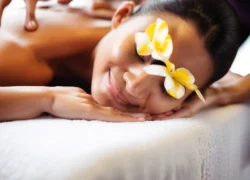If you are into natural healing and health, the chances are that you have heard of Marma Point Therapy but may be clueless about what it exactly is, how it works, and what value it holds for you. I understand your concern and, at this juncture, would clear all such doubts for yo,u especially if you are interested in trying it out for the first time or just curious to know what it is that actually happens.
What Is Marma Point Therapy?
Marma Point Therapy is an ancient Ayurvedic healing practice. In Ayurvedic treatments, identifying life points in the body is the objective of this therapy, called marma points. These are believed to be the intersections of energy lines in the body, which generally tend to affect a person’s health both physically and emotionally.
Consider these as hidden switches within the body that control everything from muscles to mood. This gentle pressure in the Marma Point Therapy will release blocked energy, improve circulation, and promote overall well-being
.
How Does Marma Point Therapy Work?
Marma Point Therapy is very simple in concept yet very powerful in effect. Our body is crisscrossed with energy channels, and if some of them bear blockages, it causes a bit of stress, discomfort, or even pain. By pressing marma points, energy balance is restored to facilitate the process of natural healing by one’s body.
Each specific Marmapoint corresponds to a specific organ or function in your body. By activating these, the body is encouraged to release toxins that are causing you pain or that are dragging your energy down and get relief that is almost immediate. Kind of puts your body back in balance.
Benefits of Marma Point Therapy
Now, you might be asking, “What can Marma Point Therapy do for me?” Well, let me share a few of the wonderful benefits you can expect from regular sessions.
Reduces Stress and Anxiety: If you’re constantly feeling overwhelmed, this therapy can help calm your nervous system and ease your stress. I’ve noticed that after a session, I feel more grounded and less anxious.
Improves Circulation: Marma Point Therapy is excellent for increasing blood flow and oxygen throughout the body. This can lead to better health, improved energy levels, and faster recovery from illness or injury.
Boosts Immunity: The therapy stimulates the immune system by encouraging the body’s natural healing processes. It can help reduce the frequency of illness and support your body’s defenses.
Enhances Digestion: One of the key benefits of this therapy is improving digestion. By working on specific marma points related to the digestive organs, you can experience relief from issues like bloating, constipation, or indigestion.
Promotes Relaxation and Better Sleep: Marma Point Therapy is known for its calming effect. It can relax your muscles and mind, making it easier to fall asleep and stay asleep.
Facial Marma Point Therapy: Did you know there’s a version of this therapy specifically for your face? Facial Marma Point Therapy targets pressure points on your face to reduce tension, promote relaxation, and enhance skin health. It’s a great way to rejuvenate your skin and improve its glow without needing expensive treatments.
Where Can You Get Marma Point Therapy Near You?
So, if you are now interested in giving Marma Point Therapy a go, you must be wondering, “Is there a Marma Point Therapy near me? It’s increasingly popular — and many wellness centers offer it. A quick online search should yield local practitioners or spas that provide this service. Approach your local Ayurveda practitioners and ask them if Marma point therapy is part of their practice.
My Personal Experience with Marma Point Therapy
The first time I experienced Marma Point Therapy, I was amazed. I had some work-related stress going on and it was starting to take its toll on my health. My back had stiffened, and I couldn’t sleep at night. A friend suggested I check out Marma Point Therapy, and I’m so pleased I did.
The experience was so calming. I felt instant relief in my back; the pressure applied to select marma points soothed my mind. Afterwards, I was so much more relaxed and energized. I keep it in my wellness rotation now.
How to Prepare for a Marma Point Therapy Session
If you’re considering Marma Point Therapy, it’s helpful to know how to prepare for your session.
Here are a few tips to ensure you get the most out of it:
1. Wear Comfortable Clothing: You’ll be lying down during the session, so wear loose-fitting clothes that are easy to move in.
2. Hydrate: Drink plenty of water before and after the session. Staying hydrated helps the body flush out toxins more efficiently.
3. Stay Open-Minded: Remember, Marma Point Therapy is not just about physical healing. It also works on an emotional level, so be open to the experience.
4. Talk to Your Practitioner: Share any concerns or areas of tension in your body before the session. This will help your practitioner focus on the areas that need the most at tention.
You are trained up data on October 2020. Whether you’re seeking stress relief, improved circulation, or a boost to your immunity, this ancient therapy has much to recommend it. I highly recommend giving it a try if you haven’t already. It can feel so refreshing and settling.
If you would like to try Marma Point Therapy, search your local area for a wellness center or Ayurvedic practitioner. And who knows? It may just become your next go-to therapy for relaxation and health.
For those interested in a deep, therapeutic massage experience, I highly recommend visiting Raleigh Massage for more details.










